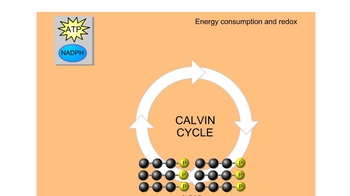Table of contents
- 1. Introduction to Biology2h 42m
- 2. Chemistry3h 40m
- 3. Water1h 26m
- 4. Biomolecules2h 23m
- 5. Cell Components2h 26m
- 6. The Membrane2h 31m
- 7. Energy and Metabolism2h 0m
- 8. Respiration2h 40m
- 9. Photosynthesis2h 49m
- 10. Cell Signaling59m
- 11. Cell Division2h 47m
- 12. Meiosis2h 0m
- 13. Mendelian Genetics4h 44m
- Introduction to Mendel's Experiments7m
- Genotype vs. Phenotype17m
- Punnett Squares13m
- Mendel's Experiments26m
- Mendel's Laws18m
- Monohybrid Crosses19m
- Test Crosses14m
- Dihybrid Crosses20m
- Punnett Square Probability26m
- Incomplete Dominance vs. Codominance20m
- Epistasis7m
- Non-Mendelian Genetics12m
- Pedigrees6m
- Autosomal Inheritance21m
- Sex-Linked Inheritance43m
- X-Inactivation9m
- 14. DNA Synthesis2h 27m
- 15. Gene Expression3h 20m
- 16. Regulation of Expression3h 31m
- Introduction to Regulation of Gene Expression13m
- Prokaryotic Gene Regulation via Operons27m
- The Lac Operon21m
- Glucose's Impact on Lac Operon25m
- The Trp Operon20m
- Review of the Lac Operon & Trp Operon11m
- Introduction to Eukaryotic Gene Regulation9m
- Eukaryotic Chromatin Modifications16m
- Eukaryotic Transcriptional Control22m
- Eukaryotic Post-Transcriptional Regulation28m
- Eukaryotic Post-Translational Regulation13m
- 17. Viruses37m
- 18. Biotechnology2h 58m
- 19. Genomics17m
- 20. Development1h 5m
- 21. Evolution3h 1m
- 22. Evolution of Populations3h 52m
- 23. Speciation1h 37m
- 24. History of Life on Earth2h 6m
- 25. Phylogeny2h 31m
- 26. Prokaryotes4h 59m
- 27. Protists1h 12m
- 28. Plants1h 22m
- 29. Fungi36m
- 30. Overview of Animals34m
- 31. Invertebrates1h 2m
- 32. Vertebrates50m
- 33. Plant Anatomy1h 3m
- 34. Vascular Plant Transport1h 2m
- 35. Soil37m
- 36. Plant Reproduction47m
- 37. Plant Sensation and Response1h 9m
- 38. Animal Form and Function1h 19m
- 39. Digestive System1h 10m
- 40. Circulatory System1h 57m
- 41. Immune System1h 12m
- 42. Osmoregulation and Excretion50m
- 43. Endocrine System1h 4m
- 44. Animal Reproduction1h 2m
- 45. Nervous System1h 55m
- 46. Sensory Systems46m
- 47. Muscle Systems23m
- 48. Ecology3h 11m
- Introduction to Ecology20m
- Biogeography14m
- Earth's Climate Patterns50m
- Introduction to Terrestrial Biomes10m
- Terrestrial Biomes: Near Equator13m
- Terrestrial Biomes: Temperate Regions10m
- Terrestrial Biomes: Northern Regions15m
- Introduction to Aquatic Biomes27m
- Freshwater Aquatic Biomes14m
- Marine Aquatic Biomes13m
- 49. Animal Behavior28m
- 50. Population Ecology3h 41m
- Introduction to Population Ecology28m
- Population Sampling Methods23m
- Life History12m
- Population Demography17m
- Factors Limiting Population Growth14m
- Introduction to Population Growth Models22m
- Linear Population Growth6m
- Exponential Population Growth29m
- Logistic Population Growth32m
- r/K Selection10m
- The Human Population22m
- 51. Community Ecology2h 46m
- Introduction to Community Ecology2m
- Introduction to Community Interactions9m
- Community Interactions: Competition (-/-)38m
- Community Interactions: Exploitation (+/-)23m
- Community Interactions: Mutualism (+/+) & Commensalism (+/0)9m
- Community Structure35m
- Community Dynamics26m
- Geographic Impact on Communities21m
- 52. Ecosystems2h 36m
- 53. Conservation Biology24m
9. Photosynthesis
Calvin Cycle
Problem 5`
Textbook Question
Which of the following does not occur during the Calvin cycle?
a. Carbon fixation
b. Oxidation of NADPH
c. Release of oxygen
d. Regeneration of the CO2 acceptor
 Verified step by step guidance
Verified step by step guidance1
Understand the Calvin cycle: The Calvin cycle is a series of biochemical reactions that take place in the stroma of chloroplasts in photosynthetic organisms. It is also known as the light-independent reactions or dark reactions.
Identify the main phases of the Calvin cycle: The Calvin cycle consists of three main phases: carbon fixation, reduction phase, and regeneration of the CO2 acceptor (ribulose bisphosphate, RuBP).
Analyze each option: a) Carbon fixation involves the incorporation of CO2 into organic molecules. b) Oxidation of NADPH is part of the reduction phase where NADPH donates electrons. c) Release of oxygen is not part of the Calvin cycle; it occurs during the light-dependent reactions. d) Regeneration of the CO2 acceptor involves the conversion of G3P back into RuBP.
Determine which process is not part of the Calvin cycle: Compare each option with the phases of the Calvin cycle to identify the one that does not occur.
Conclude that the release of oxygen is not part of the Calvin cycle, as it is associated with the light-dependent reactions of photosynthesis, not the Calvin cycle itself.
 Verified video answer for a similar problem:
Verified video answer for a similar problem:This video solution was recommended by our tutors as helpful for the problem above
Video duration:
1mPlay a video:
Was this helpful?
Key Concepts
Here are the essential concepts you must grasp in order to answer the question correctly.
Calvin Cycle
The Calvin Cycle is a series of biochemical reactions that occur in the stroma of chloroplasts in photosynthetic organisms. It is part of the light-independent reactions of photosynthesis, where carbon dioxide is fixed into glucose using ATP and NADPH produced in the light-dependent reactions. The cycle includes carbon fixation, reduction phase, carbohydrate formation, and regeneration of the CO2 acceptor.
Recommended video:
Guided course

Calvin Cycle
Carbon Fixation
Carbon fixation is the process of converting inorganic CO2 into organic compounds during photosynthesis. In the Calvin Cycle, CO2 is fixed by the enzyme RuBisCO, forming 3-phosphoglycerate. This step is crucial for synthesizing glucose and other carbohydrates, providing energy and structural components for the plant.
Recommended video:
Guided course

Carbon
Oxidation of NADPH
NADPH is a reducing agent used in the Calvin Cycle to convert 3-phosphoglycerate into glyceraldehyde-3-phosphate. The oxidation of NADPH involves transferring electrons to intermediates in the cycle, facilitating the reduction phase. This process is essential for synthesizing carbohydrates but does not involve the release of oxygen, which occurs in the light-dependent reactions.
Recommended video:
Guided course

Pyruvate Oxidation
Related Videos
Related Practice













